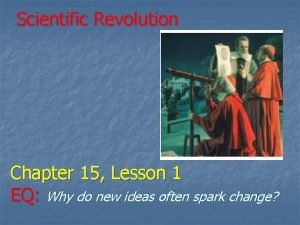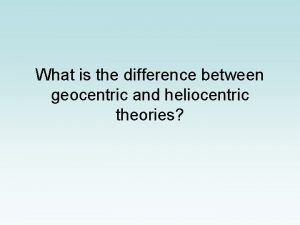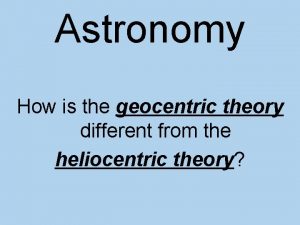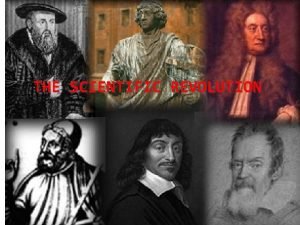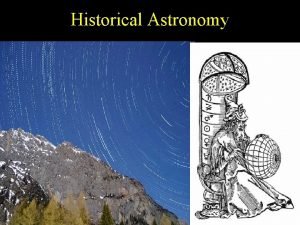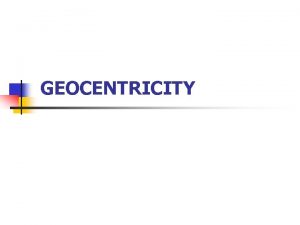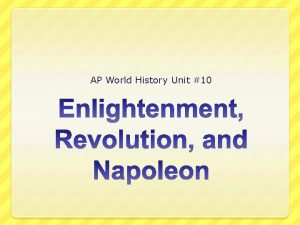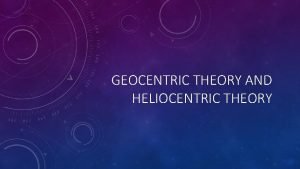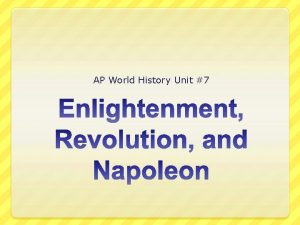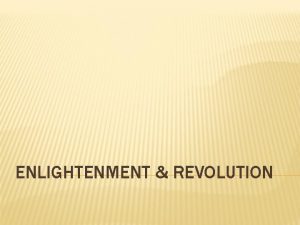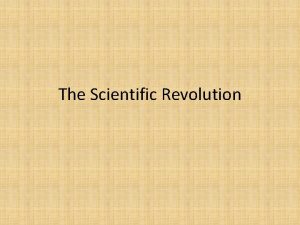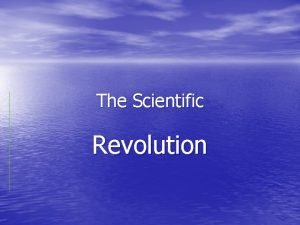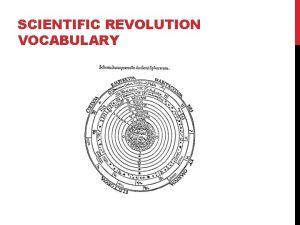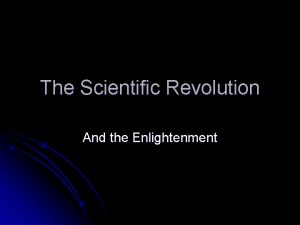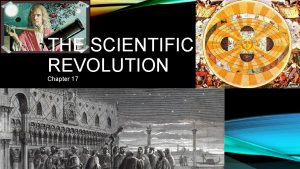Key Terms The Scientific Revolution Geocentric Model of












- Slides: 12

Key Terms -The Scientific Revolution Geocentric Model of the Universe Law of Inertia Law of Falling Objects Sir Francis Bacon Inductive Reasoning Johannes Kepler Rene Descartes Laws of Planetary Motion Sir Isaac Newton Gravity Nicolaus Copernicus Heliocentric Model of the Universe Galileo Galilei Mechanistic World View

Geocentric Model of the Universe Initially, people viewed the universe as geocentric. Geocentric Model → planets revolve around the Earth. This was widely accepted because of the work of Ptolemy in the 2 nd Century and because of religious beliefs (man is the center of the universe as God intended. )

Copernicus Nicolaus Copernicus → disputed Ptolemaic models of the universe claiming that it is too complex and lacks explanation for the positions of certain planets and the sun. Copernicus would support Aristarchus' view of the universe which was heliocentric.

Heliocentric Model of the Universe Heliocentric Model → posits that the planets revolve around the sun. This theory would be disputed by the Catholic Church and would be viewed as heretic. Many believed that if it were heliocentric, we would fall off of the Earth.

Johannes Kepler → used the heliocentric model of the universe to construct the laws of planetary motion. Laws of Planetary Motion: Planets follow an elliptical path around the sun Planets revolve at different speeds Speed of each planet's revolution around the sun depends on its distance from the sun.

Galileo was a professor of mathematics who sought to disprove many older theories while at the same time creating new ones. The invention of the telescope allowed him to prove that there are other planets and that they revolve around the sun

The Law of Inertia Galileo experimented with the speed of objects as they fall and also as they travel down hills. He made sure to select objects of differing weights. He used this to create the law of inertia. Law of Inertia → Objects in motion tend to stay in motion unless stopped by an outside force.

Law of Falling Objects Galileo would stand from higher floors and dispute Aristotle's theory that differing weights can change the speed of falling objects. Galileo would prove that Aristotle's logic was flawed. Law of Falling Objects → Objects will fall at the same speed, regardless of mass.

Sir Francis Bacon Sir Francis Bacon → philosopher and writer who promoted the Scientific Method. He stated that the method was used by many scientists and that other scientists could use those records to repeat and perfect previous theories. He stated that scientists use inductive reasoning → thinker develops general ideas after making specific observations about one or two events or things.

Rene Descartes → mathematician, scientist, and philosopher who posited that all ideas should be questioned until proven completely true. Was a firm believer in doubt which led to his writings leading up to his statement, “I think, therefore I am. ” Would also come up with the Cartesian Plane and other mathematical theories.

Sir Isaac Newton → mathematics teacher responsible for coming up with laws involving gravity and gravitational pull. Gravity → force that pulls and holds objects within a planet and a planet in orbit. He used this to state that objects have natural attraction to the world known as gravitational pull.

Results All of these theories, more specifically Newton's, lead to a mechanistic view of the world. Mechanistic world view → idea that since the world obeys many different natural laws and rules, it is a great machine. The work of these scientists led to a period of progress and rationality (change and reason). This would all culminate in the Age of Reason otherwise known as the Enlightenment.
 Lesson 1 the scientific revolution answer key
Lesson 1 the scientific revolution answer key Geocentric model vs heliocentric model
Geocentric model vs heliocentric model Helio vs geocentric
Helio vs geocentric Polynomial classification
Polynomial classification Math combining like terms
Math combining like terms Russian revolution vs french revolution
Russian revolution vs french revolution Economic causes of french revolution
Economic causes of french revolution Definition of third agricultural revolution
Definition of third agricultural revolution Difference between geocentric and heliocentric model
Difference between geocentric and heliocentric model Geocentric model
Geocentric model Heliocentric theory
Heliocentric theory Geocentric model
Geocentric model Joshua 10:13
Joshua 10:13
